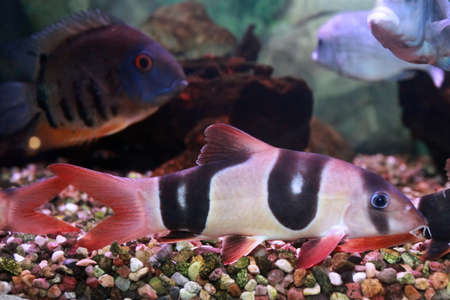Understanding Dropsy in Aquarium Fish
Dropsy is a troubling and often misunderstood condition affecting aquarium fish, particularly those kept in home tanks across the UK. At its core, dropsy is not a disease itself but rather a collection of symptoms typically indicating severe internal infection or organ failure, most commonly associated with bacterial issues. Fish suffering from dropsy exhibit a swollen abdomen, raised scales that resemble a pinecone, and general lethargy. For UK fishkeepers, recognising these signs early is crucial due to our unique environmental factors—such as fluctuating water temperatures and varying tap water qualities—which can make local fish populations more susceptible to stress and illness. Understanding what causes dropsy is fundamental; poor water quality, underlying infections, and nutritional deficiencies all play a significant role. The importance of early identification cannot be overstated, as swift action can sometimes mean the difference between recovery and loss. In this article, we’ll explore how British aquarists can best identify and manage dropsy within their tanks, with practical advice tailored for the UK context.
2. Recognising Early Symptoms of Dropsy
Dropsy can be a devastating condition for aquarium fish, but early recognition is key to improving your pet’s chances of recovery. In the UK, popular species like goldfish, guppies, and tetras are particularly susceptible, so being able to spot the warning signs promptly is essential for any responsible aquarist. Below, you’ll find guidance tailored to British fishkeepers, focusing on typical symptoms and how they may present in commonly kept species.
Common Early Signs Across Popular UK Aquarium Fish
The initial symptoms of dropsy often appear subtle and can be easily mistaken for other ailments or even normal behaviour changes. However, prompt identification can make all the difference. Here’s a breakdown of what to look out for in some of the most popular aquarium species in the UK:
| Fish Species | Early Dropsy Symptoms |
|---|---|
| Goldfish | Swollen abdomen, scales standing out (pineconing), lethargy, loss of appetite |
| Guppies | Bloating, clamped fins, hanging near the surface or bottom, paleness |
| Tetras | Unusual swelling, difficulty swimming straight, faded colours |
Behavioural Changes to Watch For
Many keepers notice behavioural changes before physical symptoms become obvious. Your fish may become withdrawn or less interested in food. You might observe them isolating themselves from shoals or spending more time resting at the bottom or floating near the water’s surface—both common red flags.
Physical Indicators Specific to Dropsy
The hallmark sign of dropsy is a noticeably bloated belly combined with protruding scales that give a pinecone-like appearance. This is often accompanied by redness around the gills or base of fins and sunken eyes in advanced cases. If you spot any of these symptoms—especially in combination—it’s important to act swiftly.
Why Early Detection Matters
The sooner you identify these warning signs, the greater your fish’s chances of responding positively to treatment. Regularly observing your tank inhabitants—ideally during feeding times when they’re most active—makes it easier to detect subtle changes and intervene before dropsy progresses too far.
![]()
3. Common Causes of Dropsy in UK Home Aquariums
Understanding the root causes of dropsy is essential for every British aquarist who wants to keep their fish healthy and thriving. While dropsy is ultimately a symptom rather than a disease itself, there are several contributing factors commonly seen in UK home aquariums that can lead to this condition.
Water Quality: The Foundation of Fish Health
Poor water quality is perhaps the most significant cause of dropsy among aquarium fish in Britain. Many homes across the UK have hard tap water or varying chlorine and chloramine levels depending on regional supply. Failing to properly treat tap water or maintain regular tank cleaning routines can result in elevated ammonia, nitrite, and nitrate levels, which place immense stress on fish kidneys and immune systems. Regular testing with a reliable kit, dechlorination, and consistent partial water changes are key preventative measures.
Dietary Factors Unique to British Aquaria
Another major contributor is diet. In the UK, many hobbyists rely on commercially available flake or pellet foods found at local pet shops such as Pets at Home. While these can provide balanced nutrition, overfeeding or relying solely on one type of food may lead to nutritional imbalances or constipation, both risk factors for dropsy. Incorporating fresh or frozen foods like peas (a classic British remedy for digestive issues in fish), daphnia, and bloodworms helps ensure variety and supports optimal gut health.
Stressors: From Overcrowding to Environmental Disturbances
Stress is often overlooked but plays a significant role in the onset of dropsy. Overcrowding is a frequent issue in smaller British homes where space-saving nano tanks are popular. Too many fish in too small a space leads to competition for resources and increased waste buildup. Additionally, sudden temperature fluctuations—common during unpredictable UK weather—or excessive noise and vibration from nearby household activities can further compromise fish immunity.
Other Contributing Factors
Bacterial infections are usually secondary but often take hold when fish are already weakened by poor environmental conditions or stress. Introduction of new fish without proper quarantine procedures—a step sometimes skipped by eager hobbyists—can also introduce pathogens into an established tank.
A Real-World Example from a London Flat
For instance, I once battled dropsy in my group of fancy goldfish after moving to a new flat in East London where the tap water was much harder than before. A combination of infrequent water changes during a busy work period and reliance on just flake food led to several cases of pineconing among my fish. After adjusting my maintenance routine and diversifying their diet, the outbreak subsided—a reminder of how quickly things can change if basic care slips, especially with unique local challenges.
4. Immediate Actions and Isolation Measures
If you suspect dropsy in one of your aquarium fish, swift and methodical action is crucial to give your aquatic friend the best chance of recovery while protecting the rest of your tank community. Here’s a step-by-step approach tailored for UK aquarists:
Step 1: Observe and Confirm Symptoms
Look for classic signs such as pinecone-like raised scales, abdominal swelling, lethargy, and loss of appetite. Use a small torch to inspect the fish closely. Record any unusual behaviour or physical changes—this information will be valuable if you consult a local aquatic vet.
Step 2: Prepare a Quarantine Tank
Setting up a separate hospital tank is essential. This minimises stress on the sick fish and reduces the risk of spreading infection. Here’s what to include in your UK-style quarantine setup:
| Essential Equipment | Notes for UK Keepers |
|---|---|
| Tank (10-20 litres) | Smaller tanks are easier to heat and medicate; ensure it’s cycled or use bottled beneficial bacteria available at local aquatic shops like Maidenhead Aquatics. |
| Sponge filter/air stone | Maintains gentle filtration without strong currents—ideal for stressed fish. |
| Aquarium heater | Keep water stable at 24-26°C; check temperature with a reliable UK plug-compatible thermometer. |
| Dechlorinated tap water | Add a reputable UK water conditioner such as Seachem Prime or Tetra AquaSafe. |
Step 3: Gently Transfer the Fish
Using a soft net, carefully move the affected fish into the quarantine tank. Avoid handling with bare hands as this can damage delicate scales further. Minimise stress by performing the transfer in subdued lighting and keeping noise to a minimum.
Step 4: Begin Isolation Protocols
- Monitor water parameters daily (ammonia, nitrite, nitrate) using test kits commonly available in UK pet stores.
- Avoid cross-contamination: use separate nets, buckets, and siphons for each tank.
- Disinfect hands and equipment after every use—consider antibacterial handwash or diluted bleach solutions (rinse thoroughly before reuse).
Isolation Checklist for UK Fishkeepers
| Task | Frequency |
|---|---|
| Water change (25-50%) | Daily or as needed to maintain pristine conditions |
| Check water temperature & quality | Every morning and evening |
| Observe feeding & behaviour | Twice daily; note any changes |
If You’re Unsure…
If you’re not certain about dropsy diagnosis or treatment, reach out to experienced local aquarists via British forums like Practical Fishkeeping, or seek advice from an aquatic-specialist vet registered with the Royal College of Veterinary Surgeons (RCVS). Prompt isolation and diligent care are your best allies in managing this serious condition within your home aquarium.
5. Treatment Options Available in the UK
When facing a case of dropsy in your aquarium fish, prompt and effective treatment is essential to give your finned friends the best chance of recovery. British aquarists have access to a range of medications, treatments, and natural remedies suited to our local market, many of which can be found at high street pet shops or ordered online from reputable UK retailers.
Medications Readily Available
Several over-the-counter treatments are commonly used by British hobbyists. Products such as Interpet Anti Internal Bacteria, NT Labs Anti-Fluke & Wormer, and King British Disease Clear are popular choices and are designed to target internal bacterial infections that often accompany dropsy symptoms. It’s important to follow dosage instructions closely and remove activated carbon from your filter during medication, as it can absorb the active ingredients.
Antibiotics: Veterinary Prescription Only
While antibiotics like oxytetracycline or kanamycin can be effective against severe bacterial infections causing dropsy, these are only available via veterinary prescription in the UK. If OTC remedies fail or if you’re dealing with valuable or rare species, consulting an exotics vet is highly recommended for tailored antibiotic therapy.
Salt Baths and Supportive Care
A tried-and-tested home remedy among British fishkeepers is the use of Epsom salt (magnesium sulphate), readily available from chemists like Boots or supermarkets. A short bath in a separate container—using approximately one tablespoon per 10 litres of dechlorinated water—can help reduce swelling through osmosis. Always acclimatise your fish carefully before and after any salt treatment.
Nutritional Support
High-quality foods enhanced with garlic or vitamin supplements can provide immune support during recovery. Brands like Tetra, Hikari, and Aquarian offer fortified foods widely stocked across the UK. Some keepers also swear by adding Indian almond leaves (catappa) or alder cones to the tank, which naturally release beneficial tannins and mild antibacterial compounds.
Practical Tips from Experience
Quarantining affected fish is crucial to prevent spread and allow focused care. Maintain pristine water conditions using regular partial water changes—a must for British tap water users, always add dechlorinator! Keep the tank temperature stable, ideally around 24–26°C, unless your species require otherwise. Finally, patience and close observation are key; recovery from dropsy is never guaranteed but early intervention offers hope.
6. Long-term Prevention and Care
Ensuring your aquarium remains dropsy-free over the long haul is a combination of vigilant care, regular maintenance, and tapping into UK-specific resources. Here are some tailored tips to keep your aquatic companions healthy and thriving.
Consistent Water Quality Management
Regular water changes are crucial—aim for weekly partial changes of around 20-25%, using dechlorinated tap water suitable for UK conditions. Test your tank’s ammonia, nitrite, nitrate, and pH levels routinely with reliable test kits available from UK aquatic retailers such as Maidenhead Aquatics or local garden centres with aquatics sections. Maintaining a stable temperature, especially during the UK’s fluctuating seasons, will help prevent stress in your fish.
Proper Stocking and Tank Hygiene
Avoid overcrowding by adhering to the “one inch of fish per gallon” rule, which is particularly important in smaller British homes where tanks may be more compact. Remove uneaten food after feeding and vacuum the substrate regularly to prevent organic waste build-up—this is key in preventing infections that can lead to dropsy.
Quality Nutrition and Local Feed Options
Feed a varied diet sourced from trusted UK suppliers, such as Tetra or King British brands. Consider supplementing with frozen or live foods from reputable sources like Swell UK or local aquarist clubs for added nutrition. Avoid overfeeding; small, frequent meals are better than large quantities that could pollute the water.
Quarantine New Additions
Always quarantine new fish for at least two weeks before introducing them to your main tank. This is a common practice among experienced British aquarists and helps prevent the spread of disease. Many local aquatic societies can offer advice or even lend equipment if you’re just starting out.
Utilise Local Support Networks
The UK has a robust network of aquarist societies—from The Federation of British Aquatic Societies (FBAS) to regional Facebook groups—where you can seek guidance or share experiences about dropsy prevention. Your local vet may also have experience with fish health issues; don’t hesitate to consult them if you’re unsure about symptoms or treatments.
By integrating these UK-specific routines and tapping into the wealth of local knowledge and resources, you’ll give your aquarium fish the best chance at long-term health and avoid the heartbreak that comes with dropsy outbreaks.


